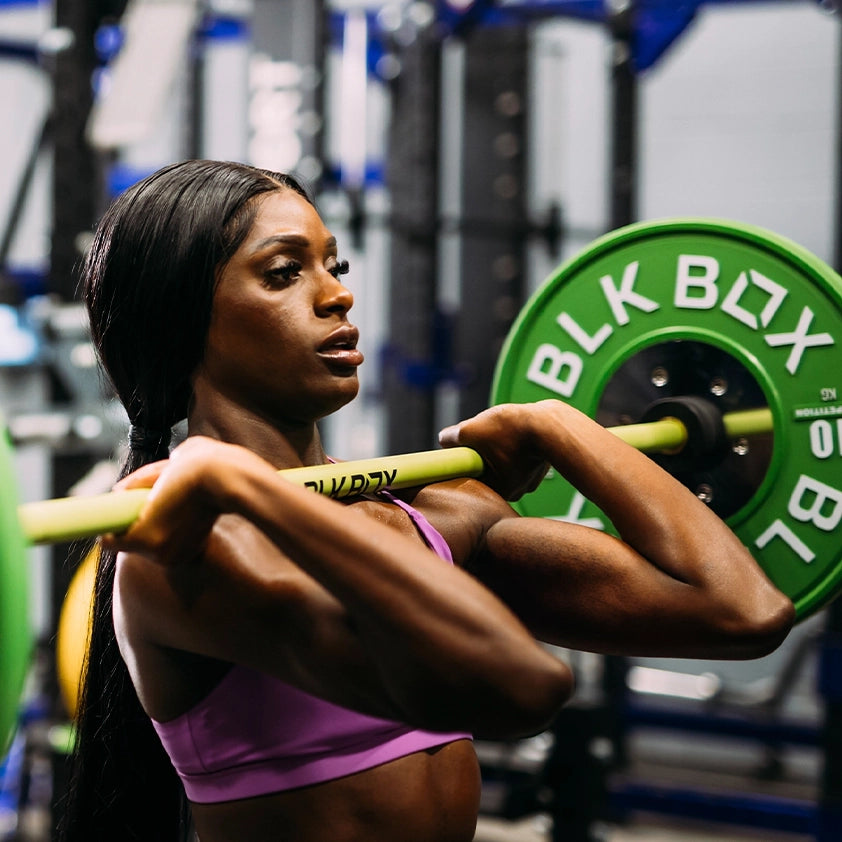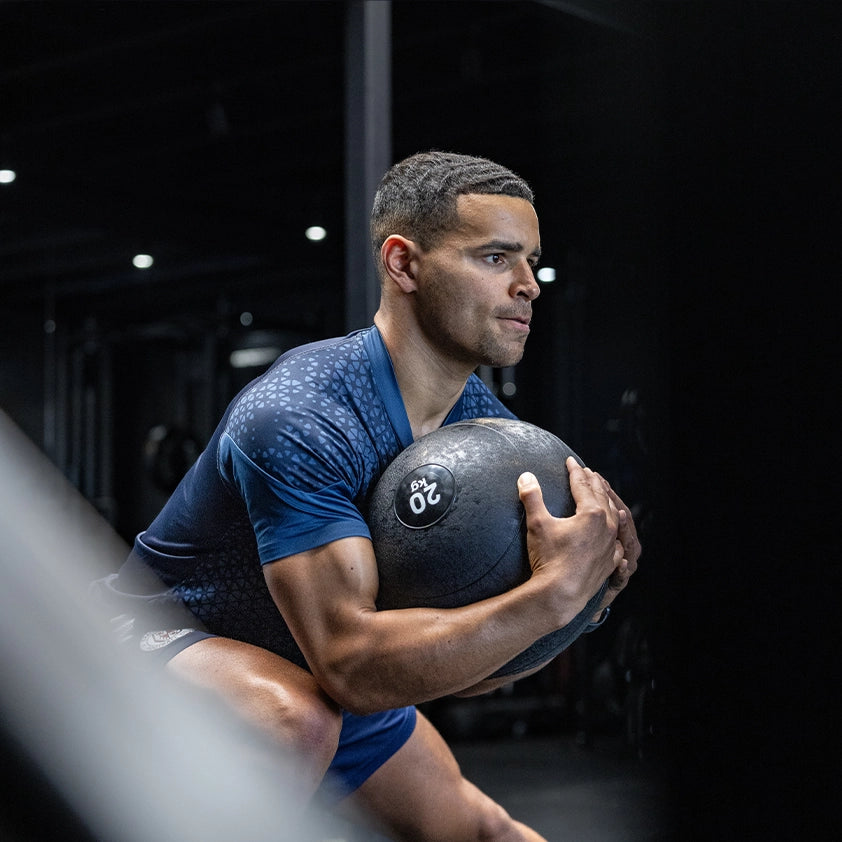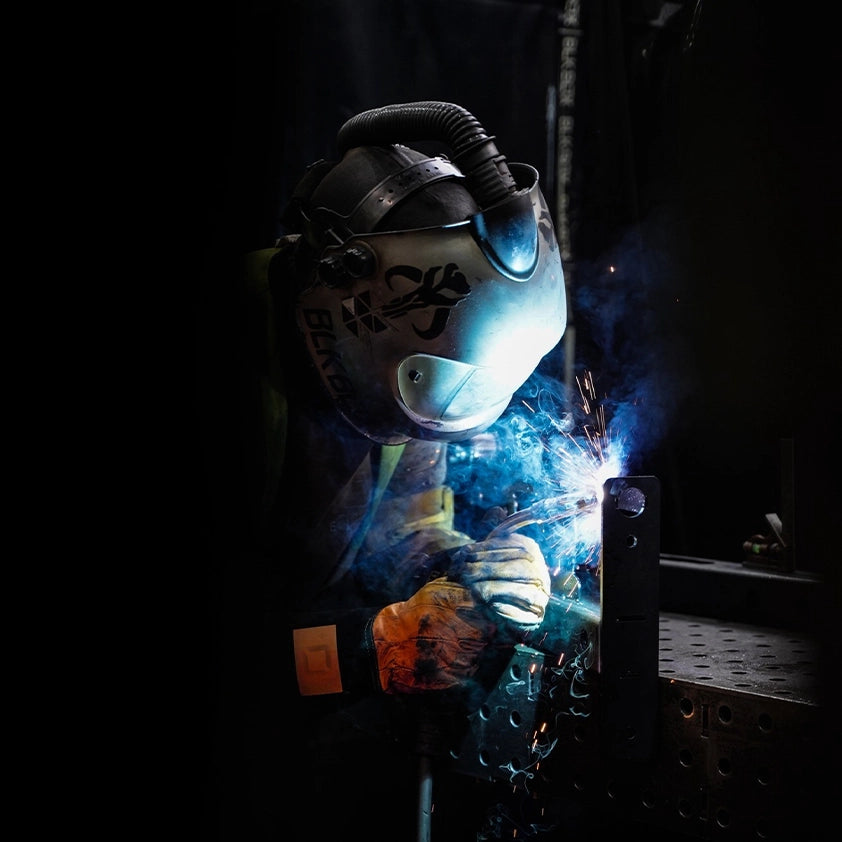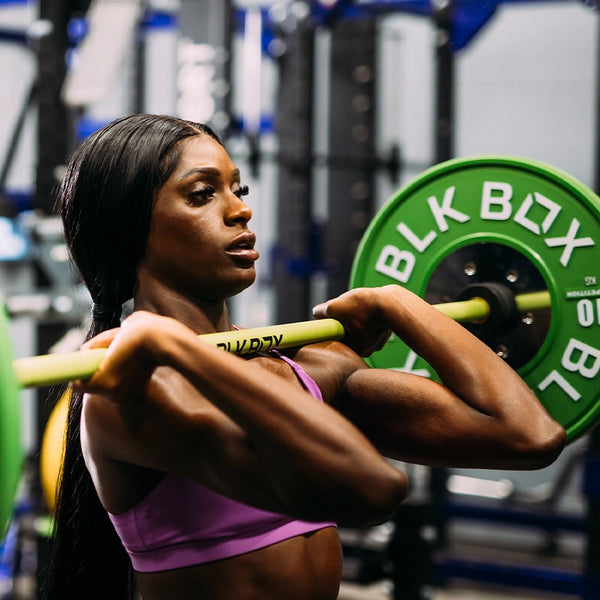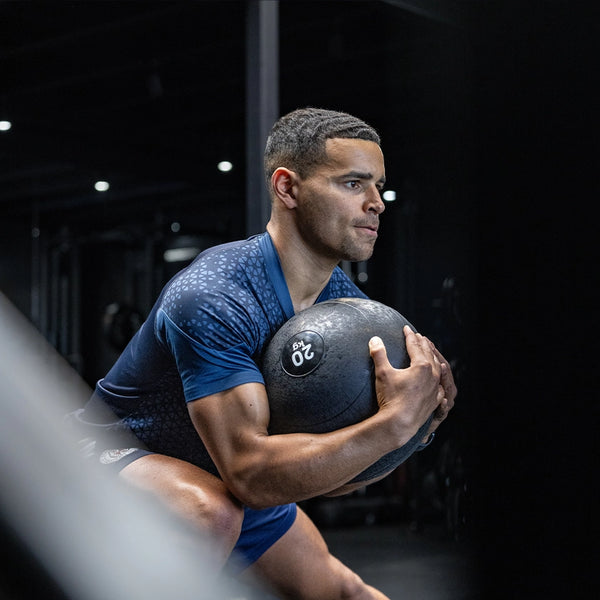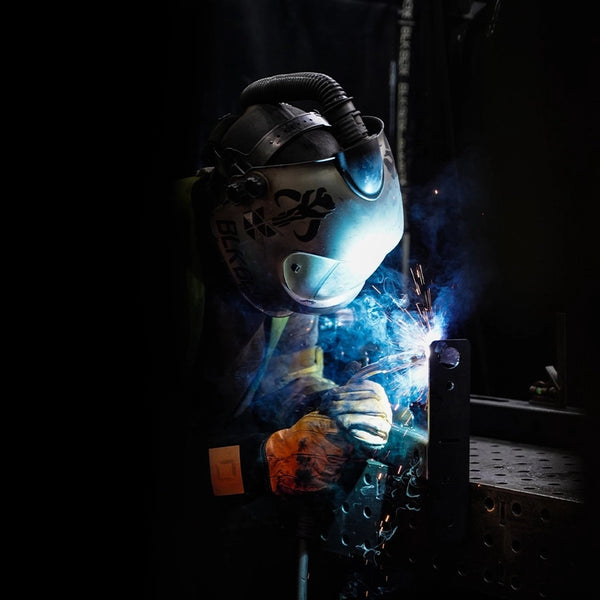GAA Star's Road To Recovery - How to Overcome A Knee Injury
BACKGROUND
My name is Arron Graffin – I am a 31-year-old hurler from Cushendall. I have been a keen sportsman all my life, representing both my club and county at all levels, Cushendall Ruairí Óg and Antrim. I come from a family of five, with an older sister and a younger brother. Unfortunately, my siblings and I have all inherited one genetic disorder from our parents – ‘bad knees’. This is in the form of ‘shallow grooves’ at the bottom of our femur bones where our patella sits in. This means that our kneecaps are more susceptible to slip out or dislocate during physical exertion. Both my siblings dislocated their kneecaps in their teenage years and it appeared that I may have been spared. That was until May 2015 – my first patellar dislocation which occurred in Mullingar, Co. Westmeath during a Leinster Hurling Championship game for Antrim. Since then, my right patella has dislocated a total of three times and my left has dislocated on one occasion. They all occurred on the field of play during training or competitive hurling matches.
I was totally unaware that I had a genetic tendency to patellar dislocation until I had an MRI scan and follow up specialist knee consultation. After the third dislocation of my right patella and having worked tirelessly with rehab to get back playing competitively – it was time to bite the bullet and get the problem fixed to minimise the risk of any further dislocations.

CONSULTATION & SURGERY
I have attended the Belfast Knee Clinic on a few occasions over the years and got to know Mr Chris Connolly, Orthopaedic Surgeon, quite well. After the third dislocation he suggested reconstruction surgery to repair the Medial Patellofemoral Ligament (MPFL). This ligament attaches the knee cap to the inner part of the femur bone and helps to keep the knee cap in “its groove” whilst allowing it to function. I had some time to prepare for the surgery and I used this time to get myself into good physical condition. This phase is referred to as “prehab” and every physio will highlight the importance of this. The surgery took place on and thankfully the operation was successful with no complications.

RECOVERY
Laying in the hospital bed the next morning a lot of thoughts begin to run through your mind. As sportspeople, is the pain and torment worth it? Will I ever make it back? Do I have the resolve to see out the rehab again? The answer is quite simple. YES!!
It is a love for the sport and all the positives it brings to our lives that make us want to push our bodies to the limit in order to get back fit, healthy and onto the field of play. There may be some silent doubts but there is an overwhelming sense of determination, drive and passion to get back doing what we love.
When rehabbing from a serious injury you go through many highs and lows and experience several stages of emotion. Self-doubt, anxiety, anger, pain, frustration & in some severe cases it can lead to depression. These feelings are all normal but it is very important to surround yourself with the correct support network. Family & friends are vital. It is easy to start feeling sorry for yourself but regular contact with team-mates, work colleagues, team management staff & medical personnel help ease the mental agony. These people are here to help you recover both physically and mentally. Sometimes you may feel very alone but that is usually far from the truth. Positivity is key.
Mentally you have to be strong. You need a proper mindset with self-belief, tunnel vision and a laser focus of the processes involved. It is important to understand that, depending on your injury, it will take a certain period of time for your body to fully recover physically. However, having a positive outlook on things will assist you in your journey back to full fitness. The time-frame for recovery and the capacity to heal differs from athlete to athlete. This totally depends on the individual person and how serious you take your rehab program. Small steps are essential. At times you may feel good but do not overdo it or rush things. Slow & steady is crucial. Listening to specialist advice from physios is vital. They are trained medical professionals who know the best approach to take. Social media also has a world of information on knee injury rehabilitation. Absorb and use all the information being relayed to you and always be willing to learn new things in regards the techniques involved with rehab. Understand, believe and follow the process.

You may have set-backs and disappointments along the road to recovery. This can be very frustrating. Unfortunately, with an injury, you will feel pain and even throughout the full recovery process pain will always pop its head up to say hello. But it is important to note that this pain will reduce over time and eventually subside. Sometimes you may question the reasoning behind what you are actually doing but always focus on the end result you want to achieve. Trust yourself and never give up on what you are doing. Remember failure is just another step in the road to success. Keep working hard on the small things step-by-step. It is import to have a resilient attitude with a ‘No Excuses Policy.’
During rehab, visualisation is very useful. It helps to imagine, in your head, being back on the game field doing what you love. Short term goal-setting is also another helpful exercise. It is about trying to make small improvements bit by bit to reach certain targets. This could be as simple as you make it but when completed successfully these small achievements prove to yourself that you’re on the right track physically. They also have a beneficial impact on your mental state. Reaching each goal is another box ticked which gives confidence and belief that your body is recovering and that your rehab is going in the right direction. Setting realistic goals is vitally important. Initially, you may focus on timeframes but it is better to concentrate on targets and the quality of rehab. It is ok to compare yourself to others but you need to realise everyone is different. Returning to play is one thing but returning to performance is another. You must accept that returning to the field is not the end of the hard work and you must embrace the hard graft that is needed to get back to the top. Sacrifices have to be made.
During my rehab I was doing everything possible to make these small personal gains. I am very fortunate to have gym access in work therefore I was doing daily rehab sessions at lunchtime. Sometimes twice daily. Repetition, repetition, repetition. Working hard on the small simple things as I always wanted to ‘bank’ another session. I was regularly going for a dip in the sea or in the pool either swimming to try to build my cardio base or aqua jogging to assist with recovery and mobility. I was also constantly on the Ball Wall to keep my eye in with the basic skills of the game. Even though you cannot run you can always work on the basic skills of hurling like your touch, striking and handling. These individual sessions are tough but this hard work and dedication to your rehab is essential if you have any serious ambition to return.
When returning from any serious injury the biggest issue any players face is the ‘fear’ of reinjury. This causes serious anxiety, stress, nervousness and self-doubt which can put a lot of people off returning to sport. Other issues that can deter a return is lack of confidence in the treated knee, a loss of motivation or quite simply a lack of interest. Each individual must mentally overcome these demons and banish these fears. This can be very difficult but it is essential in order to progress to full recovery. You cannot have any doubts in the back of your mind regarding your injury when returning - if you do you are wasting your time.
Physios can help you with this and I had support in abundance from my physio Ally McKeown. Nothing was too much trouble for him. He was available 24 hours a day 7 days a week for advice and guidance. He calls a spade a spade and gives total honesty which is vitally important. He instilled serious confidence and re-assurance in me while gradually building things up one session at a time until I was physically ready to return. He also gives you the kick up the backside you need at times, constantly pushes your body into the red zone and makes you worker harder than you thought was physically possible. I am forever grateful and couldn’t thank him enough for his efforts. Injuries happen. This is part and partial of any sport however the most important thing is to stay positive and come back stronger than before. Always remember your body achieves what your mind believes.

REHAB SCHEDULE
Week 0-2
- Slight weight bearing assisted walking with crutches and knee brace.
- Using a lot of pain relief.
- Ice & elevation 4/5 times per day using Cryo Cuff.
- Performing simple exercises – Toe and ankle movements, straight leg-raises quad and hamstring co-contractions.
- Dressing/ bandages removed and changed after 10 days.
- Loss of appetite.
- Noticeable atrophy – muscle wastage of quad, hamstring and calf muscles.
Week 2-3
- Knee feeling more stable and moving better.
- Can hobble unassisted but still in a knee brace and using crutches.
- Scars healing well and continued with ice & elevation 2/3 times per day.
- No more pain relief required.
- Continued with simple leg movements and return to exercise – TRX rows, press ups, upper body dumbbell weights and core workout. Conditioning sessions with battle ropes.
Week 3-4
- Becoming more mobile day-by-day.
- Continued with ice and elevation 1-2 times per day.
- Upper body strength sessions – press ups, pull ups, battle ropes, core & dumbbell workouts. Frustrating not being able to do cardio.
- Day 24 – Walking unassisted full weight bearing with a slight limp. No crutches.
- 1st physio session completed – slow contractions and knee bend movements. Soft tissue massage. We spoke about the processes involved and we set targets. Very early stages but feeling positive, focussed and motivated.
Week 4-5
- Increasing knee bend movement week-on-week.
- Slight set-back with pain in the knee caused by patellar
- Started to build up leg muscles due to muscle atrophy.
- Continued with simple leg exercises – TRX assisted squats, wall sits, 1-leg balance, single leg RDL’s, calf raises, good-mornings, mini bridges, nordics.
- First time back doing cardio on Concept2 Rowing Machine.
- Knee can be stiff and aches after exercise.
Week 5-6
- Knee feeling much stronger and stable but can still feel achy pain due to patellar
- Continued with rehab exercises on a daily basis. Slow and steady. Positive mindset.
- Another physio session – stepping things up gradually and filling me full of confidence.
- Introducing a few more technical exercises to build up muscles surrounding the knee.
- 6-week post op review with surgeon confirmed recovery is moving quicker than expected.
- New goals and personal targets set.
Week 6 to Present-day
- Progressing daily with leg strengthening exercises.
- Pool sessions – swimming and aqua jogging.
- Introduced dynamic/ explosive exercises such as multi-directional hops, bounds and jumps.
- Continued with weekly physio sessions to monitor improvements and any pain.
- Returned to pitch 3 months post op with 1-to-1 running session with physio.
- Gradual progression from light jogging > running > twisting & turning > introduced into non-contact hurling training taking part in striking and touch drills.
- Returned to full contact hurling training 3 ½ months after surgery.
- Returned to a competitive hurling game after 4 months.
- Currently now 5 months post-op. Knee still not 100% fit but the pain has reduced significantly and the rehab continues on a daily basis.
TOP 5 KNEEHAB EXERCISES:
- Single leg squats (sit to stand).
- Nordics
- Single leg RDLs.
- Multi-Directional Hop & Lands.
- Bulgarian Split Squat.
REHAB SUMMARY:
- A strong positive mental attitude is required.
- Trust the processes.
- Set realistic goals & targets.
- Surround yourself with people who will drive you on.
- Listen to and absorb medical advice.
- Use your support network.
- Work hard, have self-belief and never give up.










